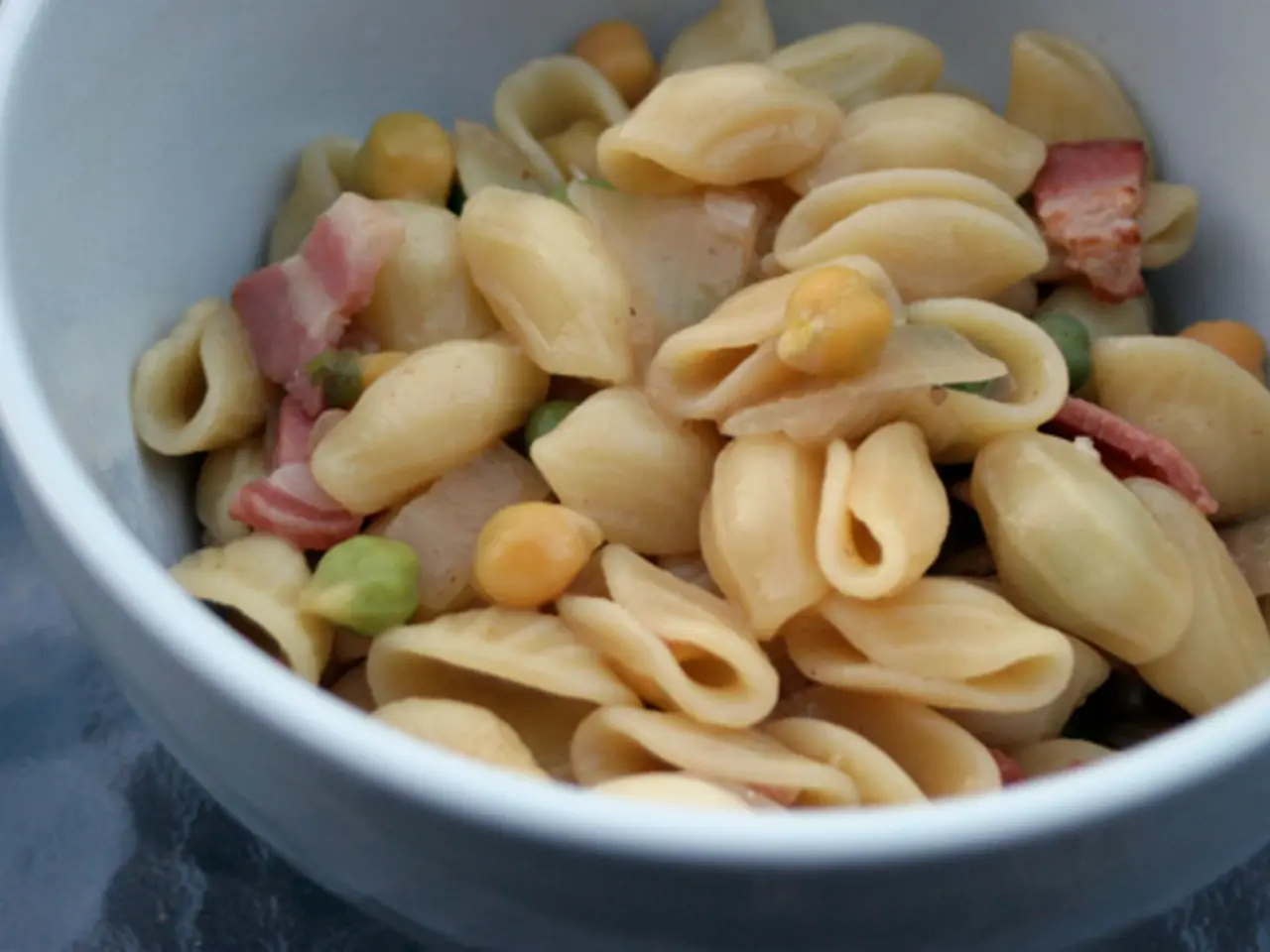Selecting Eco-Friendly Pasta: Your Pathway to Conscious Pasta Consumption!
The world of pasta is evolving, with a growing emphasis on sustainability. Alternative grains and pulses are pushing the boundaries of traditional methods, offering promising options for a greener future.
Key Factors to Consider
When selecting sustainable pasta, key factors to consider include:
- Ingredient Sourcing: Opt for pasta made with organic or sustainably grown grains, such as durum wheat, to reduce chemical use and environmental impact. Some producers prioritize organic components even if the entire product is not certified organic.
- Packaging: Sustainable pasta should use compostable or biodegradable packaging instead of conventional plastic. Options like industrially-compostable bio-plastic bags, such as KM Packaging’s C-Range, minimize landfill waste and allow for home or industrial composting.
- Supply Chain Transparency: Look for brands that clearly communicate their sustainability initiatives, such as eco-friendly farming, energy-efficient production, or local sourcing to reduce carbon footprints.
- Overall Company Sustainability Commitment: Favor brands that practice eco-friendly kitchen solutions, including responsible packaging, reduced waste, and support for sustainable agriculture.
Certifications to Look For
Certifications that signify sustainable pasta or related practices include:
- Organic Certification: Indicates ingredients grown without synthetic pesticides or fertilizers, promoting soil health and biodiversity.
- MSC (Marine Stewardship Council): Relevant for seafood fillings like lobster ravioli, certifying sustainable fishing practices to protect fish stocks.
- Compostable Packaging Certifications: Packaging that meets industrial or home composting standards (e.g., certifications from organizations aligned with EN 13432 or ASTM D6400) assures biodegradability.
- Avoid exaggerated or outdated sustainability claims and aim for transparency where credentials are current, clearly defined, and accessible.
Making an Informed Choice
Once you've identified several brands that align with your sustainability values, compare their products based on key factors. Look for details about farming practices, processing methods, packaging materials, and supply chain transparency. Examine the ingredients list: Does it specify the type of wheat and its origin? Is it certified organic?
Many companies actively promote their sustainability initiatives on their websites and in their marketing materials. Supporting local producers and farmers' markets offers a powerful way to minimise your environmental impact and contribute to your local economy. Farmers' markets provide opportunities to engage directly with producers, gaining a deeper understanding of their farming practices and the stories behind their products.
The Future of Sustainable Pasta
The future of sustainable pasta is bright, brimming with innovative approaches to production and a growing emphasis on conscious consumerism. Technology is playing a crucial role in improving the sustainability of pasta production through precision agriculture and AI. Pulses, such as lentils and chickpeas, are being explored as potential alternatives to wheat in pasta production.
Remember, cooking with sustainable pasta isn't just about eating ethically; it's about savouring delicious, flavourful meals that are good for you and the planet. Consider any initiatives that support local communities or promote fair trade practices. Choose pasta made from organic or sustainably farmed grains, packaged in certified compostable materials, and produced by brands transparent about their environmental impact. Key certifications include organic farming labels and recognized compostability standards for packaging.
- In sustaining pasta cooking, sourcing ingredients intelligently is essential; embrace durum wheat and other organic or sustainably grown grains.
- Opt for pasta products in biodegradable or compostable packaging to minimize landfill waste and promote eco-friendly practices.
- Transparency in supply chains is crucial; look for brands that disclose their eco-friendly farming, energy-efficient production, and local sourcing strategies.
- A company's overall commitment to sustainability is essential; prefer brands that practice responsible packaging, waste reduction, and support for sustainable agriculture.
- Organic certification guarantees that ingredients are grown without harmful chemicals, promoting soil health and biodiversity.
- When buying seafood-filled pasta, look for MSC certification for assurance of sustainable fishing practices.
- Seek compostable packaging certifications, such as those from EN 13432 or ASTM D6400, ensuring packaging biodegradability.
- Steer clear of vague or outdated sustainability claims; instead, favor transparent and up-to-date credentials.
- Examine product details; look for detailed information about farming practices, processing methods, and packaging materials.
- Engage with local producers and farmers' markets to understand their farming practices, reduce environmental impact, and support local economies.
- Technology advancements, like precision agriculture and AI, are revolutionizing pasta production's sustainability.
- Pulses, like lentils and chickpeas, could become alternative grains in pasta production, bringing new possibilities for sustainable food options.
- Sustainable pasta consumption is about more than just ethics; it's about enjoying flavorful meals that benefit your health and the planet.
- The values of fair trade and community support should be considered when making a pasta choice.
- Select pasta made from organic or sustainably farmed grains, packaged in certified compostable materials, and produced by brands transparent in their environmental impact, holding certifications such as organic farming labels and recognized compostability standards for packaging.






